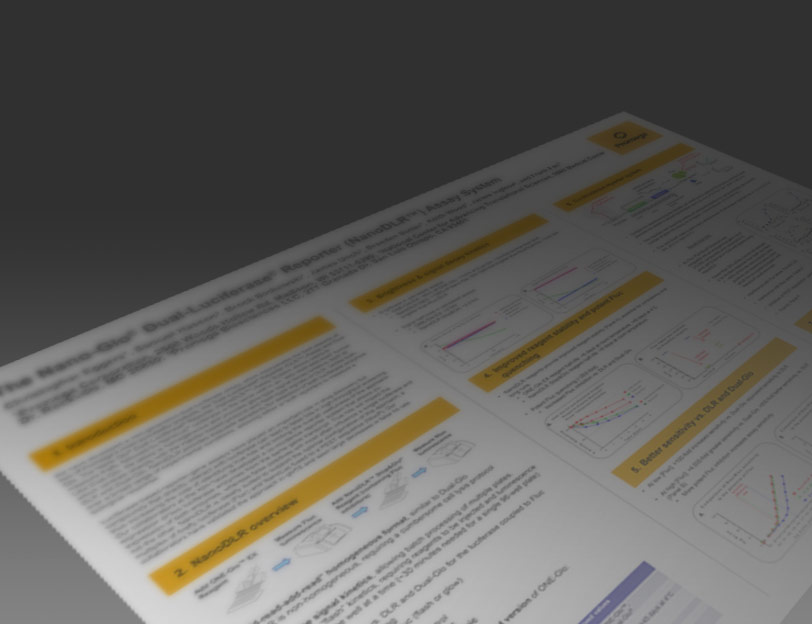Protein Detection
We offer a broad range of tools for detecting and quantifying proteins, from traditional immunological detection reagents to novel methods that monitor protein abundance in live cells.
Protein labeling products include HaloTag® Interchangeable Labeling Technology—a versatile protein analysis tool used to image live or fixed mammalian cells, purify proteins, investigate protein interactions and more. The HiBiT protein tagging system provides a powerful method for monitoring and quantifying proteins at endogenous expression levels with a simple luminescent signal.
Protein Detection Product Groups
Protein Degradation
Assays to detect ternary complex formation, ubiquitination, E3 ligase target engagement and subsequent protein degradation by the ubiquitin-proteasome system.
Protein Quantification
Sensitive bioluminescent-based methods to detect and quantify HiBiT-tagged proteins in cells, on the cell surface or secreted in the medium.
Protease Assays
Bioluminescent assays to measure the activity of purified cellular proteases and proteasomes.
Protein Labeling
Cell imaging and in vivo protein localization tools. Includes HaloTag® technology, antibody blocking reagents, and fluorescent and colorimetric labeling systems for immunoblotting.
Primary and Secondary Antibodies
Antibodies, substrates and accessory products for immunoblotting, immunocytochemistry and immunohistochemistry.
Top Protein Detection Products for Your Lab
HaloTag® Fluorescent Ligands
For protein labeling and detection. Each includes a chloroalkane group for HaloTag® protein attachment.
G8251, G8252, G2801, G2802, G8272, G8273, G8581, G8582, G1001, G1002, G8471, G8472, G2991, G3221, G8281, G8282, G8591, G8592
Janelia Fluor® HaloTag® Ligands
Dyes for fluorescent labeling, confocal imaging and high-resolution single-molecule imaging studies of HaloTag® fusion proteins in living cells.
GA1110, GA1111, GA1120, GA1121, CS315101, CS315102, CS315103, CS315104, CS315105, HT1010, HT1020, HT1030, HT1040, HT1050, HT1060, HT1070, HT1100, HT1110
Nano-Glo® HiBiT Lytic Detection System
Bioluminescent method for detecting the total amount of HiBiT-tagged proteins in the cell.
N3030, N3040, N3050
Need a product modified?
Contact us to discuss custom packaging, formulation and format options for protein analysis products.

Protein Quantitation and Detection Basics
The detection and quantitation of individual proteins is one of the fundamental aspects of proteomics. Immunological-based methods such as quantitative enzyme-linked immunosorbent assays (ELISA), Western blotting and dot blotting are very common and sensitive assays for protein detection, and they use antibodies that react specifically with entire proteins or specific epitopes (e.g., fusion tags) after cell lysis. Detection techniques are typically based on chemiluminescence or fluorescence.
For live-cell detection of proteins, fluorescence imaging microscopy is now routinely used. The most common and conventional method is the use of intrinsically fluorescent proteins (FPs) related in structure or sequence to green fluorescent protein (GFP). Alternatively, a series of self-labeling enzymes have been developed that can covalently attach a fluorescent ligand to one of its own amino acid residues. These enzymes are similar in size to FPs. If these enzyme domains are fused in frame to a protein, the pair can be labeled by introducing a cell-permeable fluorescent ligand, which covalently reacts with the fusion tag.


